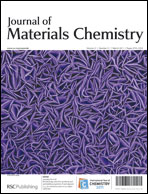We demonstrate sugar functionalised hydrogel surface coatings which enable the retention of hepatocyte-specific cell function during in vitro culture. The materials were designed to exploit a unique characteristic of hepatocyte biology, with β-galactose moieties displayed to allow cellular adhesion via the specific asialoglycoprotein receptors (ASGP-R) expressed on hepatocyte cell surfaces. Polyethylene glycol acrylamide hydrogel (PEGA) was modified with a galactose containing ligand, lactobionic acid (LA) with D-glucuronic acid (GlcA) used as a non-ASGP-R binding control. FT-IR analysis of the resultant gels revealed that the sugars had been covalently incorporated into the material. Fluorescence labelling was used to quantify the degree of saccharide integration. Cell culture experiments showed that hepatocytes attached preferentially to sugar containing gel coatings, when compared to non-functionalised PEGA controls. It was observed that cells on the LA and GlcA containing surfaces were more metabolically active, compared to controls, and proliferated to a monolayer by day 7 in culture and maintained some characteristics of hepatocyte functionality, such as urea synthesis over the course of 7 days. Despite these observations, further investigations using flow cytometry and RT-PCR, proved that cell attachment was unlikely to involve an ASGP-R mediated mechanism.

You have access to this article
 Please wait while we load your content...
Something went wrong. Try again?
Please wait while we load your content...
Something went wrong. Try again?


 Please wait while we load your content...
Please wait while we load your content...